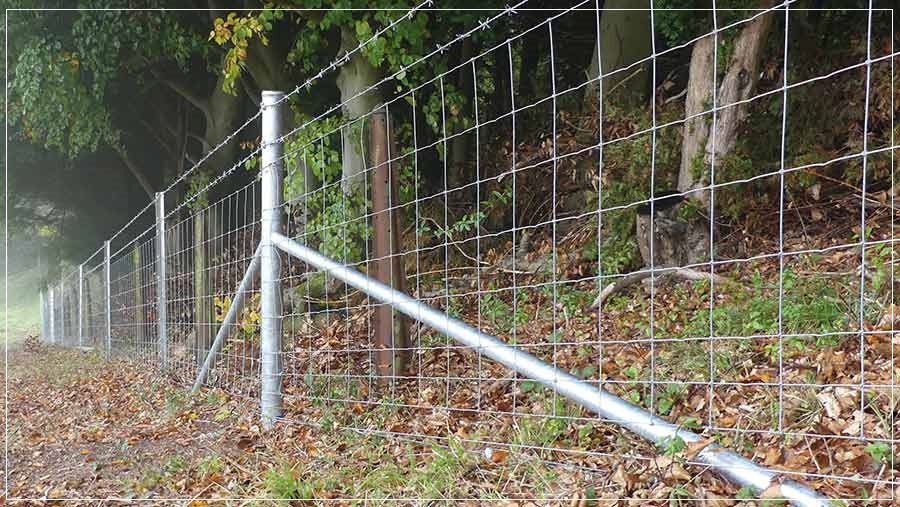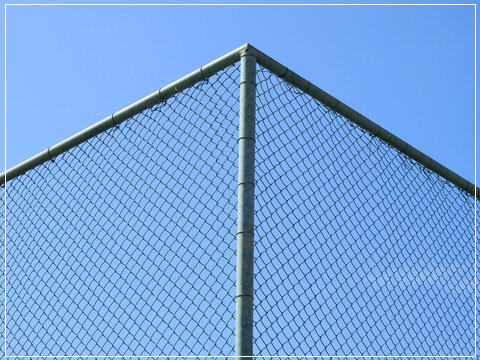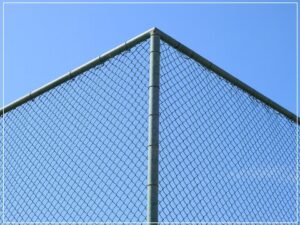The Essential Guide to Fence Post Types – Fence posts are the unsung heroes of every sturdy and reliable fence. Often overlooked, these simple yet vital components provide the backbone for fencing structures, ensuring their stability, durability, and longevity. In this comprehensive guide, we delve into everything you need to know about fence posts, from their types and materials to installation tips and maintenance practices.
what are Fence Posts?
Fence posts are the backbone of any fence, serving as the sturdy vertical supports that anchor the entire structure into the ground. Typically made from materials like wood, metal, vinyl, or composite, these posts are strategically positioned along the fence line at regular intervals to provide stability and support. Their primary function is to bear the weight of the fence panels and withstand external forces such as wind, ensuring that the fence remains standing and secure.
Each type of fence post offers distinct advantages based on factors like durability, maintenance requirements, and aesthetic preferences. Wooden fence posts, for example, are renowned for their natural beauty and versatility, while metal posts excel in strength and longevity. Vinyl posts boast low maintenance and resistance to weathering, making them ideal for homeowners seeking hassle-free solutions. Composite posts combine the best of both worlds, offering the appearance of wood with enhanced durability and minimal maintenance.
Proper installation and maintenance of fence posts are essential for ensuring the longevity and effectiveness of the fence. From digging the post holes to anchoring them securely and conducting regular inspections for signs of damage, attention to detail at every stage is crucial. By investing in quality materials and implementing sound installation practices, property owners can rely on their fence posts to provide years of reliable service, define boundaries, enhance security, and add aesthetic appeal to their outdoor spaces.
Fence Post Types
Fence posts, the backbone of any fence, come in various types, each tailored to specific needs and fencing styles.
Metal Fence Posts:
Renowned for their robustness and longevity, metal fence posts, such as steel or aluminum variants, stand as stalwart guardians in high-security or heavy-duty fencing applications. With their sturdy build, metal posts offer unparalleled strength, ensuring the integrity of the fence against external pressures and environmental elements.

Vinyl Fence Posts:
Embracing the virtues of low maintenance and resilience, vinyl fence posts emerge as champions in the realm of modern fencing solutions. Resistant to rot, insects, and weathering, these posts stand tall even in the face of nature’s harshest challenges, providing a durable alternative to traditional materials. Their sleek appearance and adaptability make them a favored choice for contemporary fencing projects.
Composite Fence Posts:
Bridging the realms of natural aesthetics and modern engineering, composite fence posts emerge as a synthesis of wood and plastic. Combining the timeless allure of wood with the durability and resistance to decay inherent in plastic, composite posts offer a harmonious blend of form and function. They stand as beacons of innovation, providing a sustainable and long-lasting solution for fencing needs.
Materials for Fence Posts
The choice of material for fence posts depends on a multitude of factors, including budget constraints, aesthetic preferences, and environmental considerations. Here are some common materials used for fence posts:
Metal:
Renowned for their durability and strength, metal fence posts are a popular choice for various fencing applications. Steel, aluminum, and wrought iron stand out as stalwart options, offering exceptional resistance to corrosion and weathering. Their robust construction makes them ideal for supporting heavy-duty fences and ensuring long-term structural integrity. Whether securing residential properties or delineating commercial boundaries, metal fence posts provide a reliable solution built to withstand the test of time.
Vinyl:
In the realm of modern fencing solutions, vinyl fence posts reign supreme as a symbol of low-maintenance elegance. Crafted from PVC (polyvinyl chloride), these posts boast unparalleled resistance to rot, decay, and pest infestations. Their sleek appearance and minimal upkeep requirements make them a favored choice for homeowners seeking both practicality and aesthetic appeal. From suburban retreats to urban landscapes, vinyl fence posts offer a seamless blend of style and functionality, standing as enduring guardians of privacy and security.
Installation Tips for Fence Post Types
Proper installation is crucial for the stability and longevity of a fence. Here are some essential tips for installing fence posts:
- Ensure the post holes are deep and wide enough to accommodate the posts securely, typically about one-third of the post length.
- Use concrete or gravel to anchor the posts firmly in the ground, providing stability and resistance to shifting or leaning.
- Maintain consistent spacing between posts to support the fence panels evenly and prevent sagging or bowing.
- Check the alignment and level of each post before securing them in place to ensure a straight and uniform fence line.
What size post is best for fencing?
The size of Fence Posts depends on several factors, including the type of fence being installed, the materials used, and the local building codes or regulations. In general, the diameter and length of the post should be sufficient to provide adequate support and stability for the specific type of fence.
For most residential fences, common sizes for wooden Fence Post Types range from 4×4 inches to 6×6 inches in diameter, with lengths typically ranging from 6 feet to 8 feet. These sizes are suitable for supporting standard fence panels made of wood, vinyl, or metal, and they offer adequate strength to withstand normal weather conditions and occasional stress.
For fences requiring greater strength or stability, such as those used for privacy, and security, or in areas with high winds or heavy snow loads, larger or thicker posts may be necessary. In such cases, posts with larger dimensions, such as 6×6 inches or even 8×8 inches, may be recommended to ensure adequate support and durability.
It’s essential to consult with a professional or follow local building codes and guidelines when determining the appropriate size of fence posts for your specific project. Factors such as the height and length of the fence, soil conditions, and anticipated environmental stresses should all be taken into consideration to ensure the fence is structurally sound and meets safety standards.
In conclusion
fence posts are essential components of any fence system, providing structural support, stability, and longevity. By choosing the right type of posts, following proper installation techniques, and implementing regular maintenance practices, you can ensure a durable and reliable fence for years to come.






